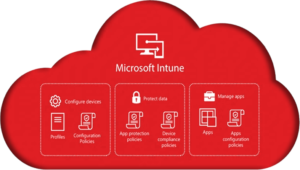This part of an ongoing series about Windows Intune. This part will focus on deploying software with Windows Intune. This section is mainly for Windows-based clients, as iOS and Android must go through their respective app stores.
Intune Software Publisher
The first step is to install the Intune Software Publisher. This will automatically download if Intune does not see it on your PC. Run the application and log in with your Intune credentials. After, that you are presented a screen asking what you would like to do. We are going to add new software.
Read through the “Before you begin” screen, and keep “Software installer” selected on the “Software Setup” screen. Next, browse to the path of the installer.
On the next screen, we can fill out information about the software. This is similar to the information you can provide about applications in SCCM.
Next, we can define requirements. This is the same as SCCM – we define which operating systems are allowed to install the software. This only applies to Windows devices. This application does not require a particular version of Windows, so I am going to skip it.
Next, we need to define a detection rule. This is also similar to the SCCM application model, though you do not have as many options. I am going to add a simple file rule for Firefox.
Next, we define the command line parameters to install the software. Firefox is a simple “/S” install, so I will insert that. Notice that it is only the parameters, and not the file name itself.
Next, we define return codes. This should be left as the default, unless your application has custom return codes for success and reboot required. Finally, we can review our settings from the Summary page and upload the application.
After upload, you will see it listed under Managed Software:
After it is uploaded, all you have to do is deploy it to a group. It will then show up in the Intune portal.
Disclaimer
All content provided on this blog is for information purposes only. Windows Management Experts, Inc makes no representation as to accuracy or completeness of any information on this site. Windows Management Experts, Inc will not be liable for any errors or omission in this information nor for the availability of this information. It is highly recommended that you consult one of our technical consultants, should you need any further assistant.





